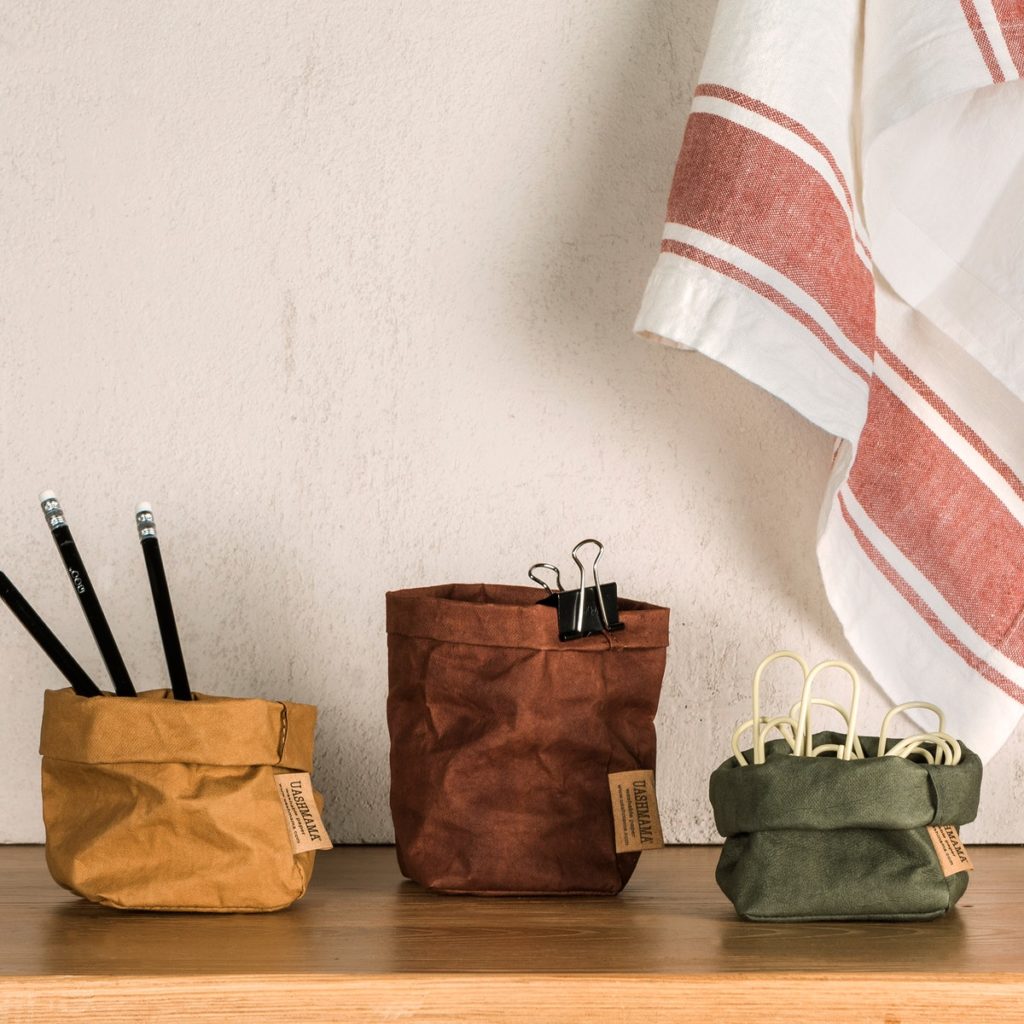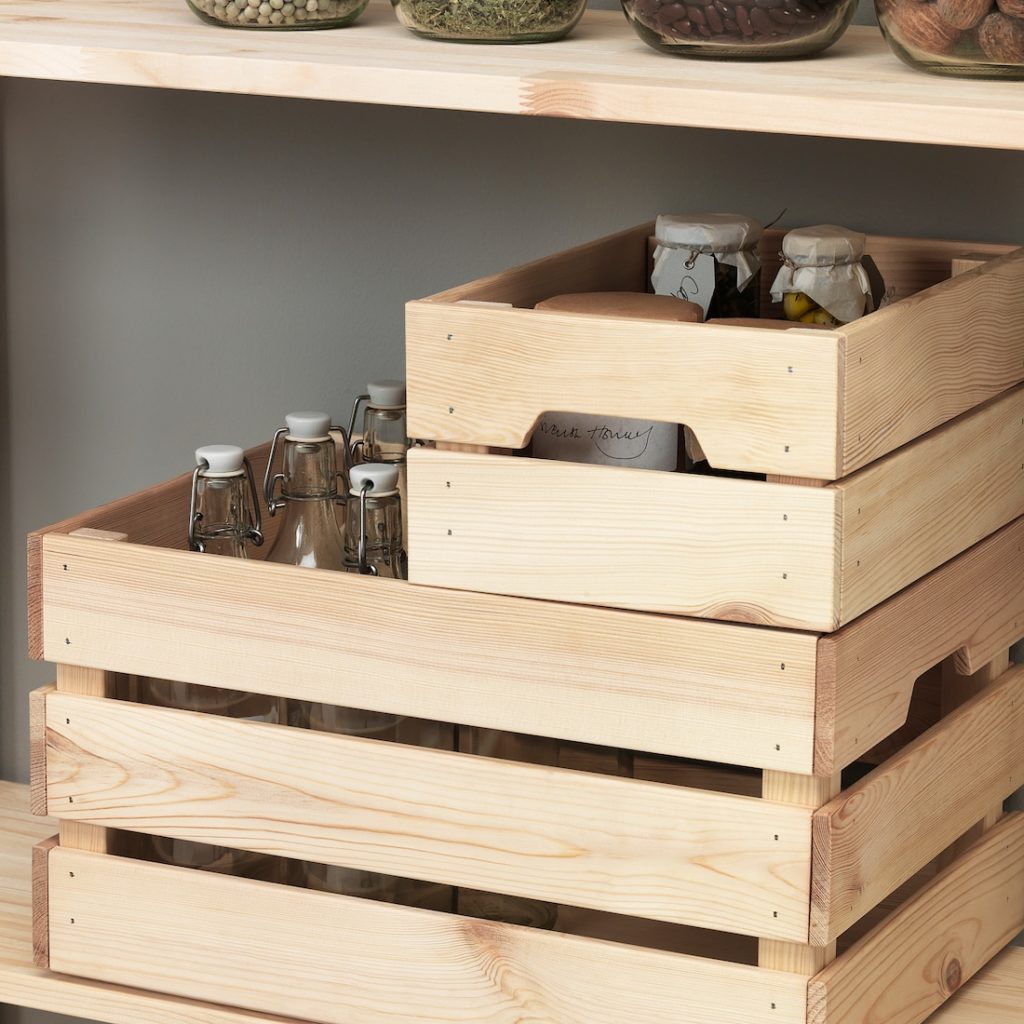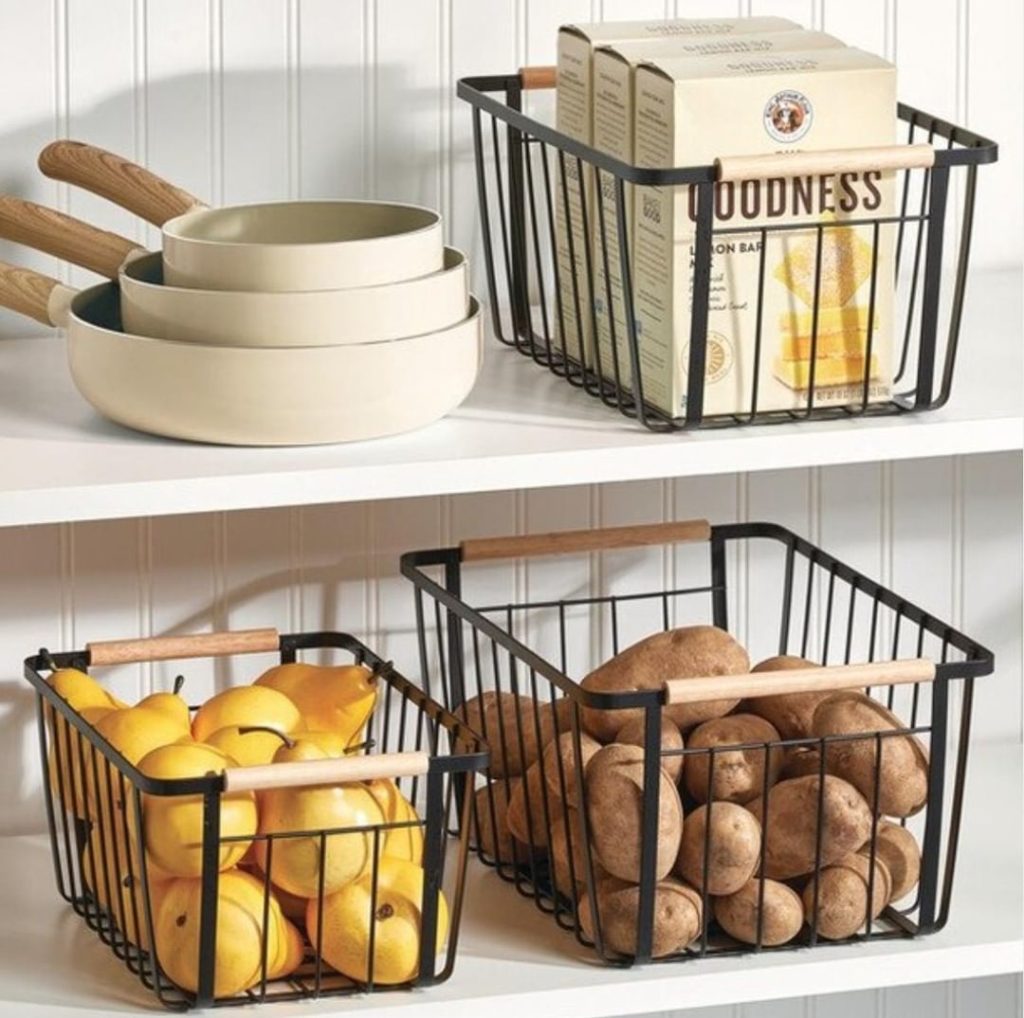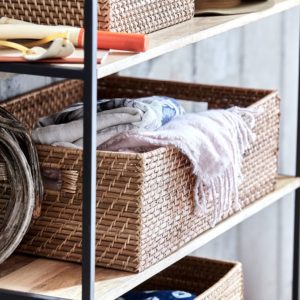If you’ve seen the recent Netflix hit, The Home Edit, you’ll notice the use of acrylic containers. Organizers love them, since they’re clear, lightweight, come in different shapes and sizes, and fairly durable for its use. They have the look of glass, without the fragility and weight. The question we ask: for eco-conscious people, is acrylic a good choice? And are there alternatives?
Acrylics are Plastics
If you want to reduce plastics in your home and the environment, acrylic might not be a good choice. Acrylic or PMMA (Polymethyl Methacrylate) is a type of plastic. Trademarked acrylics include Plexiglass and Lucite made by DuPont (which also makes Teflon).
Toxicity
In terms of toxicity, acrylics have gained popularity as the go-to plastic, since they are free of chemical bisphenol-A or BPA, a carcinogen. However, BPA, in plastic production may have just been replaced by BPS or BPF, which “may disrupt the function of your cells in a way similar to BPA.”
Also, the manufacturing of plastics has long-lasting environmental impact, such as wasted plastic during production and toxic fumes.

Recyclability
Although acrylic is recyclable, it is not the easiest plastic to recycle and requires specific facilities and expertise. Acrylics fall under group 7. Check with your local recycling center if they are capable of recycling this plastic category. Remember that just because you place an item in the recycling bin, it doesn’t mean it’s going to be recycled. There’s a good chance it will end up in the landfill.
Alternatives
- Use existing boxes: It might not be as pretty and uniform, but use existing boxes that you have at home. This is a strategy Marie Kondo used in the first season of her show, and it works.
- Steel-wire: Steel is the most recycled material and like acrylic, allows you to see contents and can be infinitely recycled.
- Wicker baskets or natural fiber baskets and bins: They offer a sustainable and rustic way to organize and decorate. They are also biodegradable. However, don’t fall for faux wicker bins made of synthetic materials, since these are mostly plastics.
- Washable paper boxes: A bit more expensive, but an alternative are these durable and sustainably produced bags and boxes from Uashmama.
- Wood and bamboo boxes and crates: Sturdy and 100% renewable material.
- Glass: less toxic to produce and easier and can be infinitely recycled.

Uashmama washable paper boxes 
Ikea wood boxes 
Wire baskets by mdesign via Amazon 
Wicker baskets from West Elm
The Takeaway
Being organized, done mindfully, already comes with positive environmental impact. So if you’re planning on organizing your home or already have, good for you! We buy fewer things we don’t need when we know exactly what we have. In theory, this leads to less waste and appreciation for what is already ours. This minimalist philosophy made the Konmari method, a global phenomenon. But as brands such as Marie Kondo and the The Home Edit expand to selling products, the struggle lies in balancing organization with wastefulness. LiFDB lives by this mantra: take only what you need from this world. Best not to misinterpret the availability of a garbage or recycling bins as a free pass to toss and buy more.

